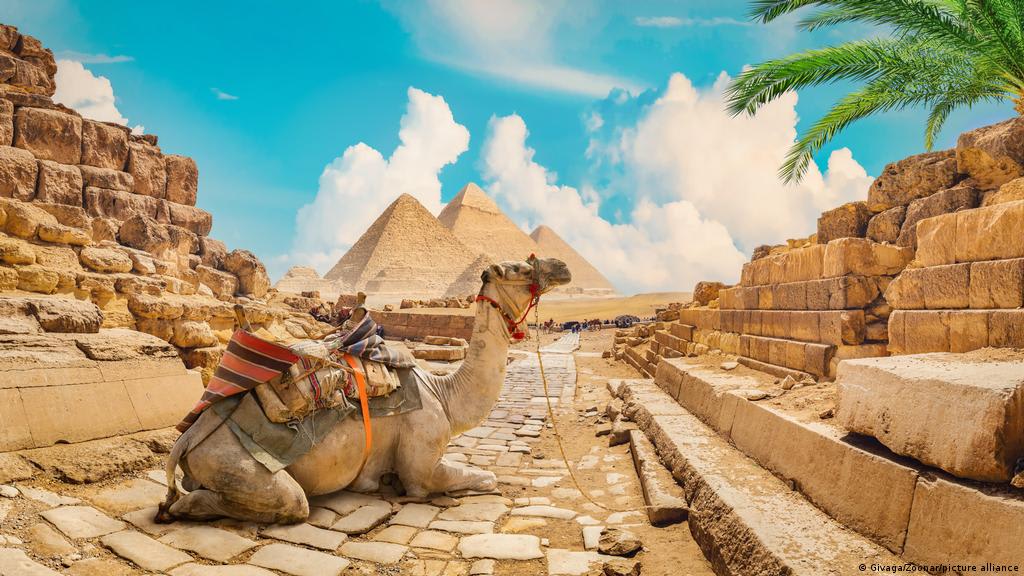Mysterious secrets in the Egyptian civilization
Egyptian civilization is one of the oldest and most fascinating civilizations in the world. It is known for its impressive pyramids, pharaohs, and intricate hieroglyphics. However, there are still some mysterious secrets that remain unsolved to this day. Here are a few:

The construction of the pyramids: The construction of the pyramids is still a mystery, and many theories have been proposed about how the ancient Egyptians managed to build such massive structures. Some suggest that they used ramps and pulleys, while others believe that they had some sort of advanced technology that has been lost to history.
The purpose of the Great Sphinx: The Great Sphinx is a massive statue of a lion with a human head that stands guard over the Giza plateau. Its purpose is still unknown, and there are many theories about why it was built and what it represents.
The identity of the pharaoh who built the Great Pyramid: The Great Pyramid of Giza is the largest of all the pyramids and was built during the 4th dynasty. However, the identity of the pharaoh who built it is still a mystery, and there is no conclusive evidence to prove who it was.
The mystery of the Valley of the Kings: The Valley of the Kings is a burial site for many pharaohs and their consorts. However, despite extensive excavation and research, many tombs remain undiscovered.
The lost city of Heracleion: Heracleion was an ancient city that was lost for over 1,200 years. It was only rediscovered in 2000 by a team of underwater archaeologists. The city is believed to have been an important trading hub, but little is known about its history.
Overall, the mysteries of the Egyptian civilization continue to intrigue historians and archaeologists, and new discoveries are being made all the time.
The curse of the pharaohs: The curse of the pharaohs is a popular legend that suggests that anyone who disturbs a pharaoh's tomb will be cursed with bad luck or even death. While there is no scientific evidence to support this curse, it has been associated with a number of deaths and strange occurrences surrounding the excavation of certain tombs.
The secret chambers within the pyramids: Despite the extensive exploration of the pyramids, there are still secret chambers that have yet to be discovered. There are several theories about what might be hidden within these chambers, including the possibility of hidden treasures or secret knowledge.
The use of electricity: Some researchers have suggested that the ancient Egyptians may have had knowledge of electricity and used it in some way in their society. This theory is based on some unusual artifacts found in tombs and temples that appear to depict electrical devices.
The role of aliens: While this is a controversial theory, some people believe that the ancient Egyptians had contact with extraterrestrial beings and that they were responsible for some of the advanced technology used in their civilization.
The mystery of the pharaoh Akhenaten: Akhenaten was a pharaoh who ruled during the 18th dynasty and is known for his radical religious beliefs. He attempted to introduce a monotheistic religion centered around the god Aten, but his reign was short-lived and his legacy is shrouded in mystery. Some researchers believe that he may have been assassinated, while others suggest that he may have been forced to flee Egypt.
These are just a few of the many mysterious secrets that surround the ancient Egyptian civilization. Despite the advances in modern technology and research, there is still much that we do not know about this fascinating culture.
The identity of Nefertiti: Nefertiti was the queen of Egypt and wife of the pharaoh Akhenaten. Her beauty is legendary, and her bust is one of the most famous works of art from ancient Egypt. However, her final resting place has never been found, and there is some debate among scholars about her true identity and role in the ancient Egyptian court.
The purpose of the Obelisks: Obelisks are tall, narrow pillars that were commonly used in ancient Egyptian architecture. While it is clear that they served some sort of ceremonial purpose, their exact function and meaning remain a mystery.
The significance of the number 42: The number 42 appears repeatedly in ancient Egyptian texts, but its meaning is unclear. Some researchers believe that it may have been associated with the number of nomes (administrative regions) in ancient Egypt, while others suggest that it may have had a religious or symbolic significance.
The true purpose of the canopic jars: Canopic jars were used to hold the internal organs of mummified bodies, but their exact purpose and symbolism remain unclear. Some researchers believe that they may have had a protective function, while others suggest that they may have been associated with the Egyptian god Osiris.
The meaning of the Book of the Dead: The Book of the Dead is a collection of spells and prayers that were used to guide the deceased through the afterlife. While much is known about the contents of the book, the precise meaning and significance of the text remains a subject of debate among scholars.
Overall, the mysteries of ancient Egypt continue to fascinate and captivate researchers and enthusiasts alike, and there is still much to be learned about this ancient civilization.
The true identity of the pharaoh Tutankhamun: Tutankhamun is one of the most famous pharaohs in ancient Egypt, but his true identity is still a subject of debate. Some researchers believe that he may have been the son of Akhenaten, while others suggest that he may have been a relative or even a usurper.
The mystery of the hieroglyphics: Despite extensive research and study, there are still many aspects of ancient Egyptian hieroglyphics that remain mysterious. For example, some of the symbols and characters have multiple meanings, and the language itself is complex and difficult to decipher.
The significance of the scarab beetle: The scarab beetle was a symbol of rebirth and regeneration in ancient Egypt and was often used in amulets and other forms of jewelry. However, its precise significance and symbolism remain a subject of debate among scholars.
The mystery of the Hatshepsut temple: The temple of Hatshepsut is one of the most impressive structures in ancient Egypt, but its purpose and function remain a mystery. Some researchers believe that it may have been a funerary temple, while others suggest that it may have been used for other ceremonial purposes.
The role of women in ancient Egyptian society: While much is known about the pharaohs and other prominent figures in ancient Egyptian society, the role of women is less well understood. Some research suggests that women may have had more rights and freedoms than previously believed, but much is still unknown about their status and roles in ancient Egypt.
These are just a few more examples of the many mysteries that surround the ancient Egyptian civilization. Despite the passage of time, there is still much to be learned about this fascinating culture and its enduring legacy.
About the Creator
Adam MR24
Welcome to my page, where you will find valuable information that can change your life! Whether you're looking to improve your health, learn new skills, or simply gain a new perspective on the world, you've come to the right place.






Comments
There are no comments for this story
Be the first to respond and start the conversation.